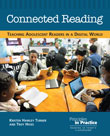During our workgroup meeting this morning, Maria Ranieri has asked us to engage in an analysis of our own social profile(s), and to reflect on our decision to engage in social scholarship.
For me, the choice to engage in social media began over a decade ago, while still in graduate school at MSU. The first entry for my blog was in 2006, at the NWP-sponsored Tech Matters advanced institute, and my first tweet was in May 2007 (also at an NWP-related event). In a sense, the growth of social scholarship in the past decade has mirrored my own journey. I’ve always lived in the world that leaned toward open-access, collaboration, and public engagement, and I have grown my network exponentially over my past 10 years at CMU.

Today, it was interesting for me to “Google” myself. I actually started with DuckDuckGo in order to get a (relatively) objective look at what “Troy Hicks” yields. Here is what I found, with my annotations. Interestingly enough, I am not in the “top 10” of Facebook profiles for “Troy Hicks,” and I actually think that is a good thing. I did click on the LinkedIn search, too, and I showed up second, FWIW.
Then, I did hop over to Google. Here is what the automated complete function showed with just “troy hicks” and the with a “troy hicks d” (because I wanted to see what would happen with digital writing).


Interestingly, the “brookings sd” is for a man, Troy Doyle Hicks, 52, of Brookings, SD, who died last November. As soon as the “d” was added after my name, however, it is interesting to see that the connections to “digital writing” as well as my books showed up. Not sure that I need to buy another domain name right now, but that was an option, too.
She concluded by having us ask one another about affordances and opportunities as well as constraints and challenges. There were many, many points made, but I will focus on one: my profile on Rate My Professor. I haven’t been on the site in years (I had only seen the 2008 post) and was interested to read the 2015 post about my ENG 514 class. I can reflect more on my experience of teaching that class, how I established timelines/provided feedback, and what I have changed since, but that is for another post.
The other point I want to make now was captured best by Jillian Belanger in a tweet:

Onward! Looking forward to my next steps as a social scholar.

This work is licensed under a Creative Commons Attribution-NonCommercial-ShareAlike 4.0 International License.









